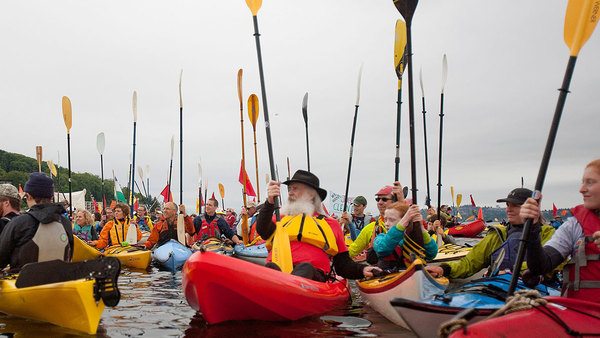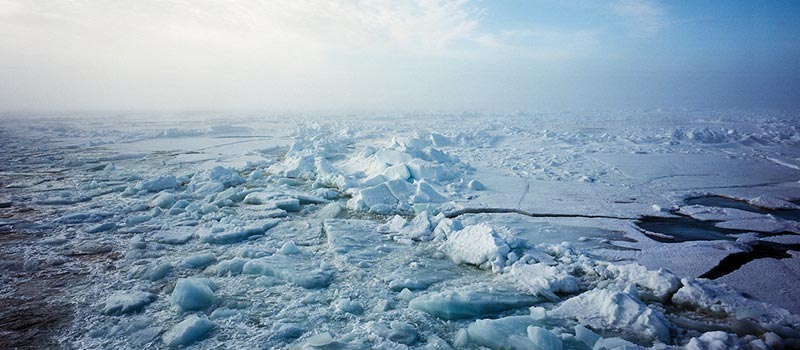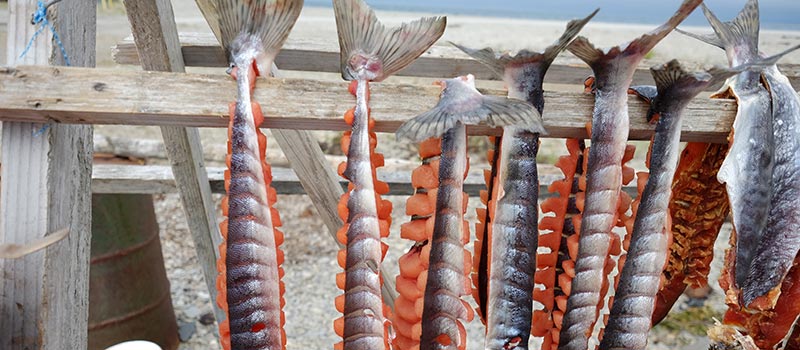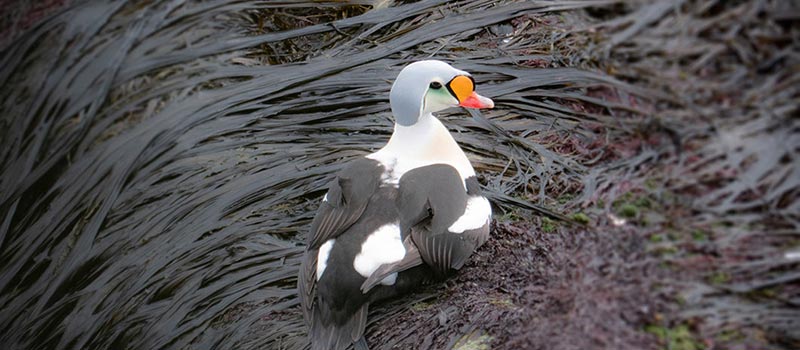
3%
Risk in the Arctic Ocean
Exploring for oil in the Arctic Ocean is risky business. Explore the map below to learn more.
Scroll to ExploreBeaufort Sea 01
Shell first started trying to drill in the Beaufort in 2007 and finally was able to operate in 2012. Despite years of preparation, Shell could not get its response equipment ready and, therefore, was not allowed to drill down to oil-bearing layers. As sea ice began to build up at the end of the 2012 season, Shell had trouble getting the Kulluk and its crew out of the Beaufort Sea for the trip back to Seattle.
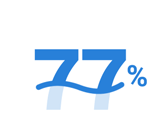
Studies show that conditions in the Beaufort Sea would likely prevent the most common spill response technologies 77% of the time.
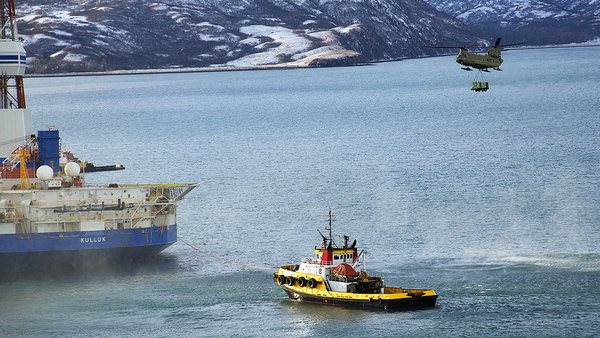
The Kulluk ran aground near Kodiak Island.
The Kulluk eventually made it out of the Arctic, and it ran aground near Kodiak Island after getting caught in a winter storm as it was being towed back to Seattle. The grounding was attributed to lack of oversight and poor planning by Shell’s contractors.
Chukchi Sea 02
A massive ice floe forced Shell to disconnect the Noble Discoverer after just a day of drilling
Shell operated in the Chukchi Sea in 2012 and 2015 using the drillship Discoverer. In 2012, a massive ice floe forced Shell to disconnect the Noble Discoverer after just a day of drilling. Shell was not allowed to finish its well in 2012 and didn’t strike oil when it tried again in 2015. After the 2015 failure Shell abandoned its Arctic drilling program after spending more than a decade and $7 billion.
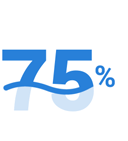
If oil and gas development goes forward in the Chukchi Sea, there’s a 75% chance of a large oil spill over the lifetime of the development.
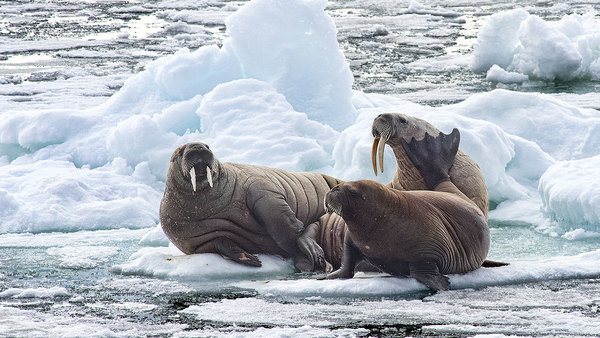
Much of the Chukchi Sea is extremely remote. There isn’t infrastructure nearby to support oil production or clean-up efforts in the event of an oil spill.
Unalaska
/Dutch Harbor
03
Just 1.5 percent of U.S. Arctic waters have been charted to modern standards
Dutch Harbor is more than 1,000 miles away from Arctic drill sites, but it’s the closest port that can handle deep-draft vessels. In 2015, Shell’s support vessel Fennica struck an uncharted shoal and tore open its hull, forcing it to retreat for repairs. This sort of accident may be more likely in the Arctic because just 1.5 percent of U.S. Arctic waters have been charted to modern standards.

98.5 % of U.S. Arctic waters are not charted to modern standards.
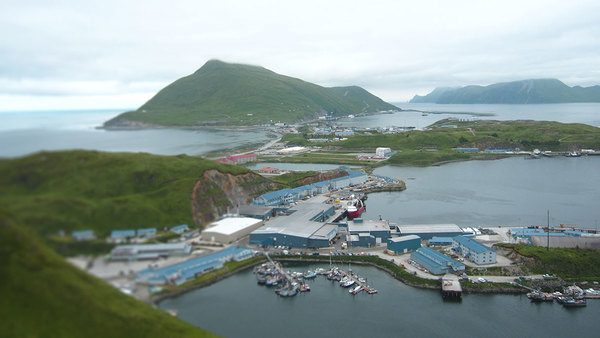
In 2012, Shell’s drillship Noble Discoverer dragged anchor and nearly ran aground outside of Dutch Harbor. Fortunately, no damage resulted from that close call.
Kodiak 04
As it was being towed south from the Arctic, Shell’s Kulluk drill ship snapped its tow line during a winter storm. The Kulluk ran aground on Sitkalidak Island on Dec. 31. Fortunately, the U.S. Coast Guard maintains a large base nearby on Kodiak Island and was able to respond quickly. The base on Kodiak is the closest permanent Coast Guard facility to Arctic drill sites, roughly 950 air miles away.

The Kodiak Coast Guard Base is roughly 950 miles from Arctic drilling sites. That’s almost 5x the distance from New York City to Washington, DC
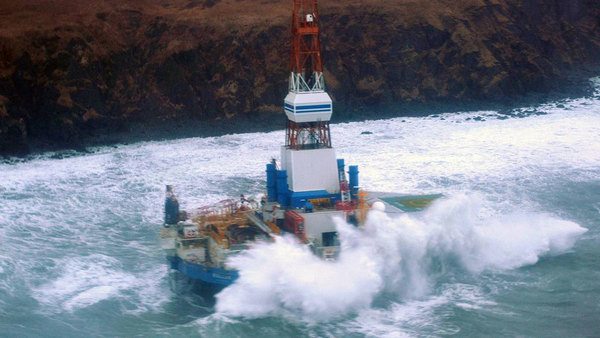
© Petty Officer 3rd Class Jonathan Klingenberg/U.S. Coast Guard
Shell also had substantial problems with the drillship Noble Discoverer, including with the ship’s main engine. At the end of 2012, the Coast Guard detained the ship for safety and environmental deficiencies.
Washington 05
Shell’s oil spill response barge failed Coast Guard inspections and its oil spill containment dome was crushed during testing
Shell used waters off Washington State as a base during its Arctic drilling efforts. Even here, things did not go smoothly. In 2012, Shell’s oil spill response barge failed Coast Guard inspections and its oil spill containment dome was crushed during testing in Puget Sound. Because Shell failed to meet oil spill response requirements in 2012, it was not allowed to drill into oil-bearing layers.
In 2015, Shell’s Arctic drilling efforts generated widespread protest, including from “kayactivists” and Seattle city officials.
